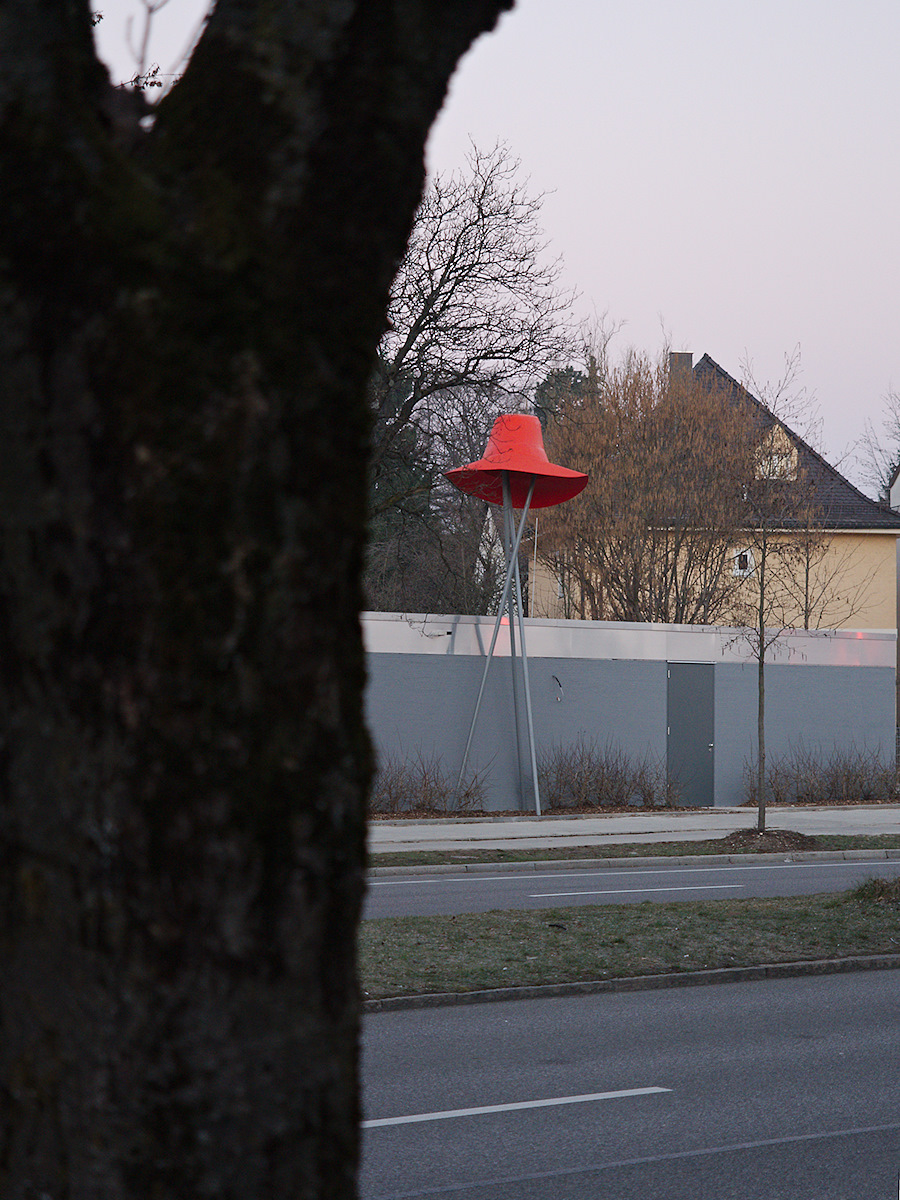
According to German law, every kid from age 3 upwards is entitled to visit a nursery or kindergarden, if the parents decide so (and many simply have not much choice for reason of their economical situation). Therefore a lot of new children’s day care facilities are built and staff is in high demand. One of those nurseries was built next to the bus stop I use for commuting, and their label, a red hat on three poles, makes up for a nice landmark.
And this is an enjoyable consequence of photographing: Attentively seeing the smaller and bigger changes, and becoming sensitive also to the not spectacular things. It’s not that I wouldn’t look forward to my next trips, but this joy even gets intensified by the ability to find the interesting things wherever I am.
When I set out for my new photographic life some years ago, I had planned to concentrate on landscapes, and so some books of iconic landscapes and their photographers live on my bookshelves. But classical landscape photography is nothing that would go well with small kid(s) in the family, and so gradually my interest turned to the urban landscape that is so easily available during daily errands, commuting, business trips or even short walks in the late afternoon. As I am professionally occupied with urban areas and privately interested in determining factors that shape the physical manifestations of society, it is just natural that I try to create images that transport my own reflections on this topic.
Une manière de “porter le chapeau” bien différente du sens qu’on lui accorde en français. À moins que il y ait dans ce symbole allemand un peu de l’idée de responsabilité en partage avec l’expression française.
Francis, a French-born colleague explained “porter le chapeau” to me, which is quite different from the meanings associated with the symbol of the hat here in Germany: First of all, and matching the placement at a nursery, is “behütet sein”, which means being protected or being looked after.
Other than that, a hat on a stick often is associated with the historical figure of Wilhelm Tell, now interpreted as a hero of indepence and not-subordination under a violent rulership.
It’s always interesting to perceive how life shapes who we are and what we become 🙂
Cedric, history certainly is one part of these life shaping forces (but I am not really good at that), but the factors of self-organisation, of physical arrangement of factors, are something that fascinate me since decades already. They truly do shape our environment, being it city or landscape.